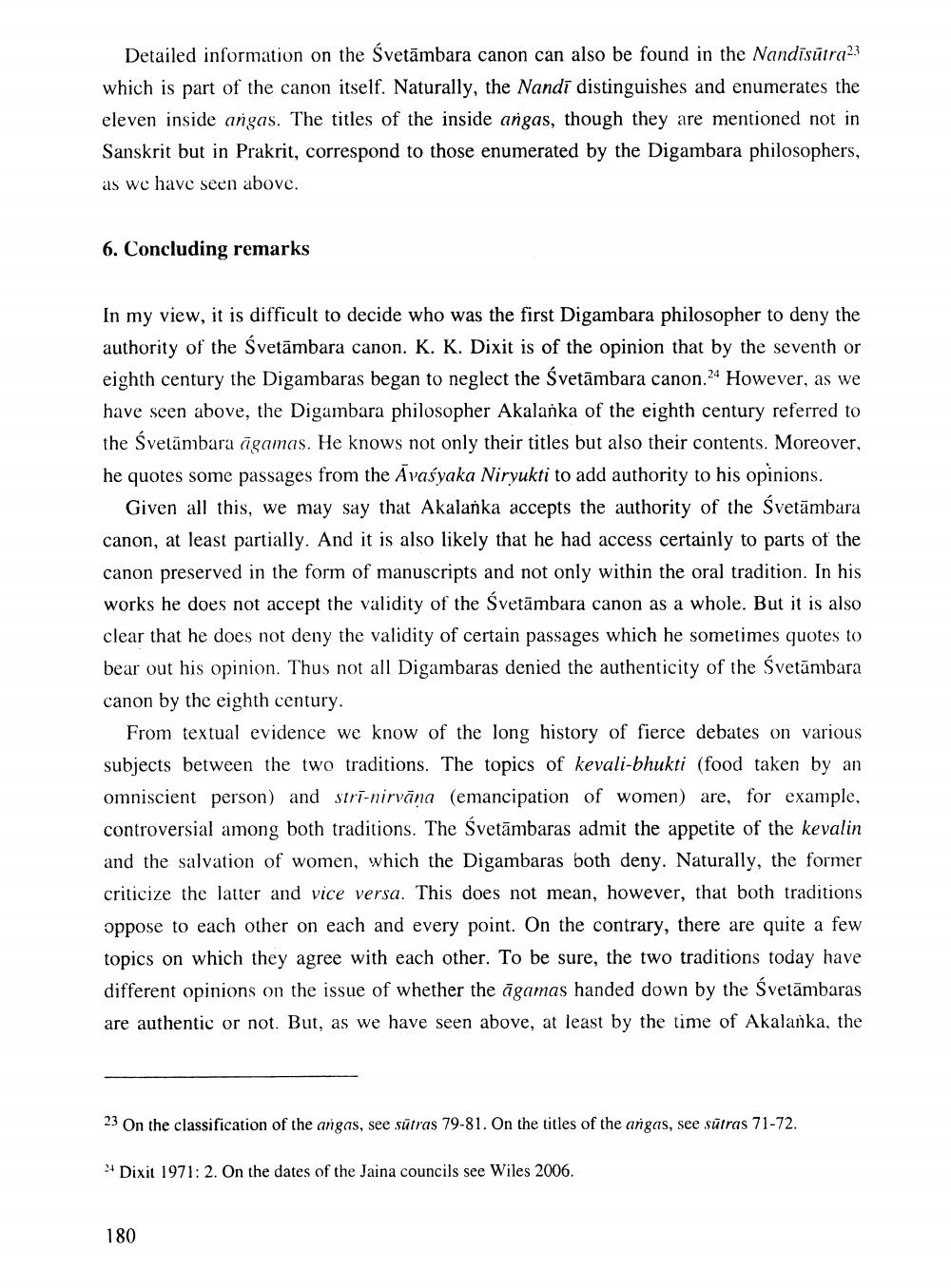________________
Detailed information on the Svetāmbara canon can also be found in the Nandisutra23 which is part of the canon itself. Naturally, the Nandi distinguishes and enumerates the eleven inside angas. The titles of the inside angas, though they are mentioned not in Sanskrit but in Prakrit, correspond to those enumerated by the Digambara philosophers, as we have seen above.
6. Concluding remarks
In my view, it is difficult to decide who was the first Digambara philosopher to deny the authority of the Svetāmbara canon. K. K. Dixit is of the opinion that by the seventh or eighth century the Digambaras began to neglect the Svetāmbara canon.24 However, as we have seen above, the Digambara philosopher Akalanka of the eighth century referred to the Svetāmbara āgamas. He knows not only their titles but also their contents. Moreover, he quotes some passages from the Avasyaka Niryukti to add authority to his opinions.
Given all this, we may say that Akalanka accepts the authority of the Svetāmbara canon, at least partially. And it is also likely that he had access certainly to parts of the canon preserved in the form of manuscripts and not only within the oral tradition. In his works he does not accept the validity of the Svetāmbara canon as a whole. But it is also clear that he does not deny the validity of certain passages which he sometimes quotes to bear out his opinion. Thus not all Digambaras denied the authenticity of the Svetāmbara canon by the eighth century.
From textual evidence we know of the long history of fierce debates on various subjects between the two traditions. The topics of kevali-bhukti (food taken by an omniscient person) and stri-nirvāna (emancipation of women) are, for example, controversial among both traditions. The Svetāmbaras admit the appetite of the kevalin and the salvation of women, which the Digambaras both deny. Naturally, the former criticize the latter and vice versa. This does not mean, however, that both traditions oppose to each other on each and every point. On the contrary, there are quite a few topics on which they agree with each other. To be sure, the two traditions today have different opinions on the issue of whether the āgamas handed down by the Svetāmbaras are authentic or not. But, as we have seen above, at least by the time of Akalanka, the
23 On the classification of the angas, see sütras 79-81. On the titles of the angas, see sūtras 71-72.
?+ Dixit 1971: 2. On the dates of the Jaina councils see Wiles 2006.
180




